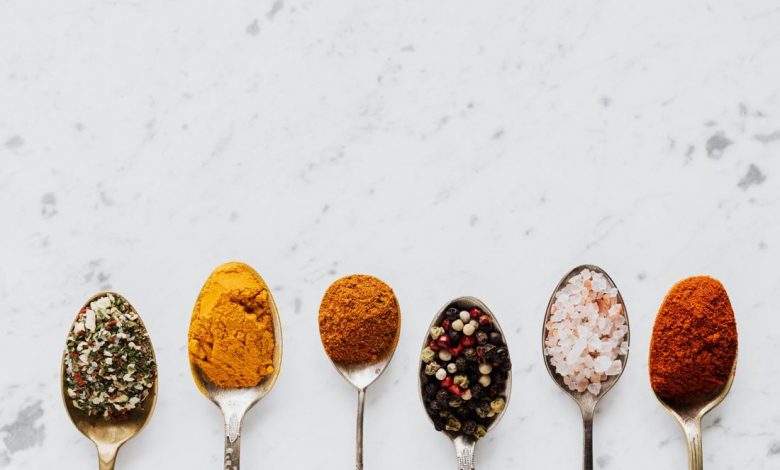
Gluten is everywhere, so learn how to avoid cross-contamination of your gluten-free foods
If you need to go on a gluten-free diet, cross-contamination is now enemy number one. If you live in a household with people who will still be eating gluten or are the parent of a child who needs to eat gluten-free, this is especially true.
Cross-contamination is when gluten particles from glutinous foods get mixed in with gluten-free foods. It might seem this means simply keeping your wheat flour in a different container than your gluten-free flour, but it’s not that easy.
People with celiac or gluten sensitivity can become ill on the amount of gluten in a single crouton, and the effect is cumulative. Gluten will be present in minuscule amounts everywhere—even items labeled gluten-free are permitted 20 parts per million of gluten—and those amounts will add up.
So what to do aside from move into a well-ventilated isolation bubble? Take what steps are available to make your home as gluten-free friendly as possible.
This one probably seems obvious, but let’s cover it just in case; gluten-free and regular, gluten-having foods should never share space. Gluten-free foods should live in containers with fitted lids, including snacks like chips or crackers, even to remind people not to touch food with gluten and then dive into the gluten-free items.
If there isn’t enough cupboard space to create separate gluten vs. gluten-free storage areas, try putting all your gluten-free items on the highest shelves. This move will keep pesky particles of glutinous foods from gathering on the shelves above gluten-free items, meaning someone grabbing items on a higher shelf won’t accidentally knock crumbs loaded with gluten into your gluten-free foods.
One of the simplest ways to create cross-contamination is to prepare gluten-free foods in the same dishes used for glutinous food. Thus, one of the easiest ways to avoid that contamination is to have dishware dedicated exclusively to gluten-free eating and cooking. This includes everything from plates and bowls to baking dishes and colanders.
If you live in a mixed-needs household, one where gluten will still be present, color-coding your dishes is a safe, reliable way to do this. Look for long-lasting, water-proof stickers (Etsy has quite a few fun options) if you don’t want to or can’t find color-coded dish sets, and be diligent about enforcing the separate dish use. If you live with roommates rather than your family, you may want to consider storing your gluten-free dishware in your room to prevent accidental mix-ups.
This color-coding system can also be used for storing leftovers. Reusable plastic containers can be purchased inexpensively and in various colors, with one color specifically designated for gluten-free foods. Not only will this keep gluten away from gluten-free leftovers, but it’ll make finding a midnight snack that much easier.
Wood is beautiful and can look lovely in your kitchen. Unfortunately, wood is also great at harboring invisible particles of gluten. Even after a good, prolonged, hot-water scrubbing, gluten can hide in unseen cracks and pores in the wood.
Scour your kitchen for any wooden items, including spoons, bowls, platters, cutting boards, or anything else that touches your food. All of these should be designated only for glutinous food use. For your gluten-free foods, purchase non-porous replacements—think plastic or metal—that won’t hold on to any gluten they accidentally come in contact with.
On a related note, never prepare gluten-free foods directly on butcher-block counters if glutinous foods have ever been prepared there. Use a cutting board or put down a barrier, such as a sheet of parchment paper, between gluten-free foods and the countertop.
Some of your small appliances are going to be gluten-loaded nightmares. Toasters and toaster ovens, for example, can never really be cleaned of all the gluten once used to toast wheat- or rye-based bread. Plan on getting a separate, gluten-free only toaster. This also goes for your waffle maker, panini press, or any other bread-exclusive cooking item with lots of nooks and crannies.
One other item that might be contaminated and difficult to clean properly is a coffee maker. Coffee itself is gluten-free, but flavored coffee packets/pods often aren’t. Depending on the coffee maker, it may be easier to buy one specifically for gluten-free coffee. Other small appliances to be careful of include your blender, food processor, bread machine, and can opener. Many styles of these items can be well cleaned and are made with non-porous materials, but be sure to double-check.
If gluten-free food will be cooked in the same kitchen as glutinous food, establish a new food-handling and prep routine. The very first thing to remember is to switch utensils every time you dip into a common-use food. Mayonnaise, for example. Use a knife to spread some mayo on your glutinous bread, then realize it’s not enough. Dip the knife back in the mayo—the whole jar is now contaminated.
One way to avoid this issue is to change all of your condiments (and foods of similar consistency and usage) over to squeeze bottles. It might seem a little strange to squirt sour cream out of a squeeze bottle at first, but it’s fewer dishes and fewer chances to cross-contaminate.
As to actual food prep, start by washing your hands and lower arms thoroughly before handling gluten-free food. After that, carefully wash every surface in the kitchen you expect to put food on. It might not hurt to wipe down cupboards or refrigerator handles that may have been touched by people handling glutinous foods. Get out your gluten-free pans or dishes, and consider using liners to be sure. Carefully clean or any item you use that also touches gluten. It might feel a little overboard, but all gluten-free stomachs eating your food will thank you.
Safe Home and A Happy Gut
Eating gluten-free isn’t always easy, so fortify your home to make it as simple as possible. It does take a lot of front-loading work! However, your life will be easier (and healthier) in the long-run.
Sources:
https://www.todaysdietitian.com/newarchives/100713p16.shtml
https://www.glutenfreeliving.com/gluten-free-lifestyle/tips-advice/8-surprising-things-you-need-to-do-to-avoid-gluten-cross-contamination/













